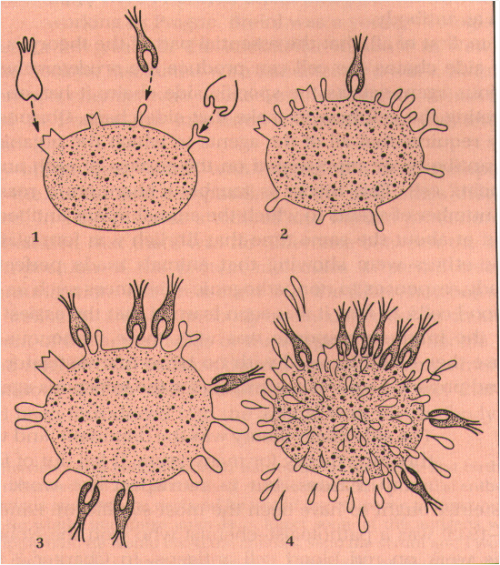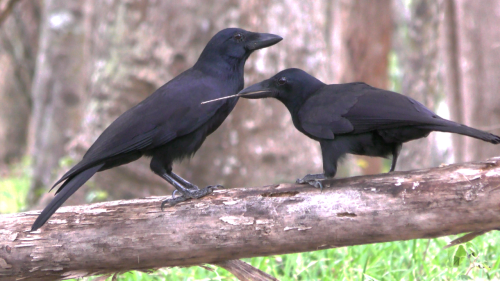Metastatic Embolus From Breast Adenocarcinoma In The Lungs

Metastatic embolus from breast adenocarcinoma in the lungs
cancer cells are usually very metamorphic, which you can tell by the different shapes of the nuclei in this embolus. i love how you can see the metastasis inside a vessel perfectly in this picture!
More Posts from We-are-all-paranoid and Others

A door full of opportunities

Antibodies are the secreted form of B-lymphocyte receptors and are a part of adaptive immunity, but how are these proteins formed?
Above is a diagram illustrating Paul Ehlrich’s Side Chain Theory of Antibody Formation. Ehlrich proposed that immunoglobulin molecules, a fundamental component of adaptive immunity, served as membrane bound proteins that bound to particular threats, similarly to the former “key in lock” view of enzymes in catalyzing biological reactions. Ehrlich also suggested that the action of binding a pathogenic molecule to the receptor would generate a signal to stimulate the production of more receptors of the same specificity. These “side chains” that were added on would then break off from the cell surface and become what we call antibodies.
We now know, however, that soluble immunoglobulin receptors are specially manufactured to be secreted as antibody, rather than just “breaking off” of the lymphocyte, even though they have the same specificity as their membrane-bound counterparts.









Neil Druckmann - HBO's The Last of Us Podcast: Episode 5
Women in STEM are just witches in white lab coats instead of black robes


art source: abigaillarson-Poisonous Plants irenhorrors-Drawlloween Laboratory
Two neurons sensing each other and trying to connect
Credit: @rockatscientist

In the United Kingdom, a 48-year-old who was bit by a stray feline ended up contracting a species of bacterium that scientists have never seen before. His immune response to the foreign microorganism was a doozy. Just eight hours after receiving multiple bites, the man's hands had swollen to such a great extent that he took himself to the emergency department. His puncture wounds were cleaned and dressed and he was given a tetanus shot before being sent on his way with antibiotics. A day later, he was back at the hospital. His pinky and middle fingers on his left hand were painfully enlarged and both his forearms were red and swollen. Doctors had to surgically remove the damaged tissue around his wounds. He was also given three different antibiotics intravenously and was sent home with oral antibiotics. This time, thankfully, the treatment worked and he made a full recovery. Back at the hospital, however, doctors were busy trying to figure out what had happened. When they analyzed the microorganisms present in samples from his wounds, they found an unrecognizable Streptococcus-like organism.
Continue Reading

not to be that guy but evolve or repeat those are your only options
most unstable girl you know: i need to get a masters degree

Like humans, these big-brained birds may owe their smarts to long childhoods
Human beings typically don’t leave the nest until well into our teenage years—a relatively rare strategy among animals. But corvids—a group of birds that includes jays, ravens, and crows—also spend a lot of time under their parents’ wings. Now, in a parallel to humans, researchers have found that ongoing tutelage by patient parents may explain how corvids have managed to achieve their smarts.
